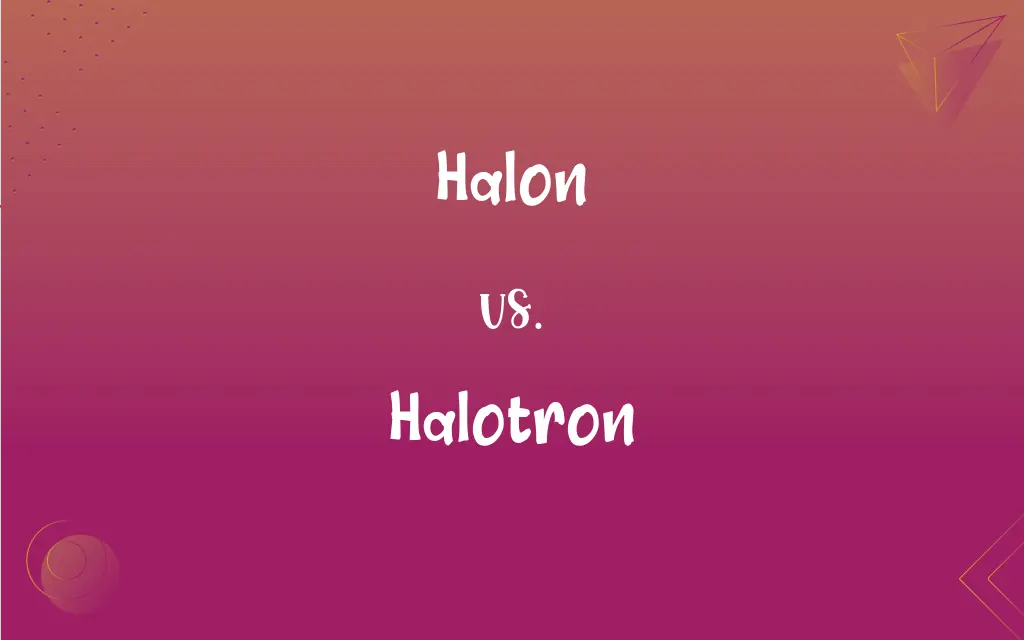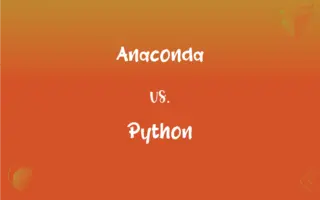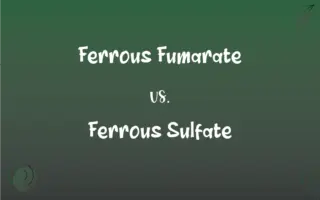Halon vs. Halotron: What's the Difference?
Edited by Aimie Carlson || By Janet White || Published on July 11, 2024
Halon refers to a group of brominated hydrocarbons used as fire extinguishing agents, while Halotron is a brand name for a specific type of halocarbon-based clean agent fire extinguisher.

Key Differences
Halon and Halotron are both used in fire suppression systems, but they have different chemical compositions and environmental impacts. Halon is a brominated compound, which is more effective in extinguishing fires but has a higher ozone depletion potential. On the other hand, Halotron is a blend of halocarbons that is less damaging to the ozone layer but may be slightly less effective in firefighting.
Halon fire suppressants were widely used in the past due to their effectiveness in extinguishing fires without leaving residue. However, due to their ozone-depleting properties, their production has been largely phased out under international agreements. Halotron, a newer alternative, has been developed to provide similar fire suppression capabilities with a reduced environmental impact.
In terms of applications, Halon systems were commonly used in data centers, aircraft, and other critical environments. Halotron, being less harmful to the environment, is now preferred in many of these applications. It is important to note that while Halotron is a better environmental choice, it may require larger quantities to achieve the same level of fire suppression as Halon.
When it comes to safety, both Halon and Halotron are considered clean agents, meaning they do not leave residue and are safe for use in occupied spaces. However, they can displace oxygen and pose asphyxiation risks in enclosed areas. Proper ventilation and safety measures are essential when using either agent.
Halon was once the go-to fire suppressant, environmental concerns have led to the development and increased use of alternatives like Halotron. Both are effective in fighting fires, but Halotron offers a more environmentally friendly option.
ADVERTISEMENT
Comparison Chart
Chemical Composition
Brominated hydrocarbons
Blend of halocarbons
Environmental Impact
High ozone depletion potential
Lower ozone depletion potential
Fire Suppression Effectiveness
Highly effective
Slightly less effective than Halon
Applications
Data centers, aircraft, critical environments
Similar, with increased preference due to environmental concerns
Safety
Clean agent, can displace oxygen
Clean agent, can displace oxygen
ADVERTISEMENT
Halon and Halotron Definitions
Halon
A fire suppressant agent.
The fire suppression system used Halon to extinguish the fire.
Halotron
A blend of halocarbons.
Halotron is a blend of halocarbons used as a clean agent in fire suppression.
Halon
A substance used to put out fires without leaving residue.
Halon is preferred in sensitive environments because it leaves no residue.
Halotron
An environmentally friendlier fire suppressant.
Halotron is preferred for its lower impact on the ozone layer.
Halon
A brominated compound.
Halon is a brominated compound used in fire extinguishers.
Halotron
A fire extinguishing agent.
The new fire extinguishers are filled with Halotron.
Halon
A fire-fighting agent with ozone-depleting properties.
Due to its ozone-depleting properties, the use of Halon is being phased out.
Halotron
A fire-fighting agent used in modern fire extinguishers.
Modern fire extinguishers often contain Halotron for effective fire suppression.
Halon
A chemical used in fire extinguishing systems.
The data center was equipped with a Halon-based fire extinguishing system.
Halotron
A replacement for Halon in fire extinguishers.
Due to environmental concerns, Halotron is being used as a replacement for Halon.
Halon
Any of several halocarbons used as fire-extinguishing agents.
Halon
(organic chemistry) A hydrocarbon (more precisely haloalkane) in which one or more hydrogen atoms have been replaced by halogens
Halon
A compound in which the hydrogen atoms of a hydrocarbon have been replaced by bromine and other halogen atoms; very stable; used in fire extinguishers although it is thought to release bromine that depletes the ozone layer
FAQs
What is Halon?
Halon refers to a group of brominated hydrocarbons used as fire extinguishing agents.
How do Halon and Halotron differ in chemical composition?
Halon is a brominated compound, while Halotron is a blend of halocarbons.
Are Halon and Halotron environmentally friendly?
Halon has a high ozone depletion potential, whereas Halotron has a lower environmental impact.
Can Halon and Halotron be used in occupied spaces?
Yes, both are considered clean agents and can be used in occupied spaces, but they can displace oxygen and pose asphyxiation risks in enclosed areas.
Is Halotron as effective as Halon in fire suppression?
Halotron is slightly less effective than Halon, but it is preferred due to its reduced environmental impact.
How are Halon and Halotron stored and used in fire extinguishers?
Both are stored as pressurized gases in fire extinguishers and released as a gas to extinguish fires.
Are there any regulations governing the use of Halon and Halotron?
Yes, there are international and national regulations that govern the production, use, and disposal of Halon and Halotron.
Are there any safety concerns with using Halon or Halotron?
Both can displace oxygen and pose asphyxiation risks in enclosed areas, so proper ventilation and safety measures are essential.
What happens to the environment when Halon is released?
When released, Halon can deplete the ozone layer, contributing to environmental damage.
What is Halotron?
Halotron is a brand name for a specific type of halocarbon-based clean agent fire extinguisher.
What are some common applications for Halon and Halotron?
They are used in fire suppression systems in data centers, aircraft, and other critical environments.
Can Halon be used in new fire suppression systems?
Due to environmental regulations, the use of Halon in new systems is generally restricted.
What are the alternatives to Halon and Halotron for fire suppression?
Alternatives include water mist systems, inert gas systems, and other clean agent systems like FM-200 and Novec 1230.
Why is Halon being phased out?
Due to its ozone-depleting properties, the production and use of Halon are being phased out under international agreements.
How do Halon and Halotron extinguish fires?
They extinguish fires by interrupting the chemical reaction of combustion, effectively smothering the fire.
What is the future of Halon and Halotron in fire suppression?
While Halon is being phased out, Halotron and other environmentally friendly alternatives are gaining popularity in fire suppression systems.
Can Halon and Halotron be used on all types of fires?
They are most effective on Class B (flammable liquids) and Class C (electrical) fires, but not suitable for Class A (ordinary combustibles) or Class D (metal) fires.
How should Halon and Halotron be disposed of?
They should be disposed of according to local environmental regulations, often involving specialized recycling or destruction processes.
Can Halon and Halotron be refilled in fire extinguishers?
Yes, fire extinguishers containing Halon or Halotron can be refilled, but it's important to use authorized service providers.
What is the impact of Halon and Halotron on human health?
In normal use, they are safe for humans, but in high concentrations, they can cause asphyxiation and other health risks.
About Author
Written by
Janet WhiteJanet White has been an esteemed writer and blogger for Difference Wiki. Holding a Master's degree in Science and Medical Journalism from the prestigious Boston University, she has consistently demonstrated her expertise and passion for her field. When she's not immersed in her work, Janet relishes her time exercising, delving into a good book, and cherishing moments with friends and family.
Edited by
Aimie CarlsonAimie Carlson, holding a master's degree in English literature, is a fervent English language enthusiast. She lends her writing talents to Difference Wiki, a prominent website that specializes in comparisons, offering readers insightful analyses that both captivate and inform.






































































